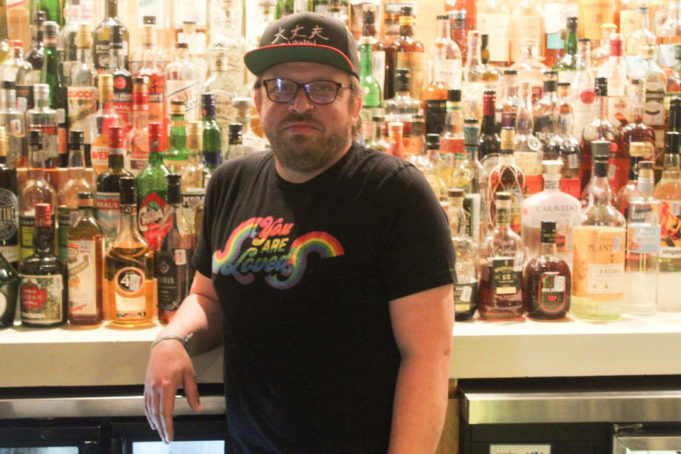Recent news of the pending closing of Cannon Chinese Kitchen took many by surprise, partly because of the reason behind the popular Near Southside restaurant’s shuttering.
“For all we have overcome the past year and a half, nothing [compares] to what the hospitality/service industry is currently facing with the shortage of staff,” the owners wrote on Facebook.
Even with periodic spikes in COVID-19 infections, restaurant and bar owners were expecting 2021 to be a rebound year after the industry took a pummeling in 2020. Patrons are returning to their favorite bistros and watering holes on the Near Southside, in downtown, and elsewhere, but many local business owners are reducing hours or closing for good because of a devastating shortage of foodservice workers.
In April, a survey conducted by the National Restaurant Association found that 91% of restaurant owners in Texas said they were having difficulty filling job openings.
The Texas Restaurant Association, the leading business association for the state’s foodservice industry, recently stated that “the workforce shortage was created by a host of challenges, and we know there is no silver bullet that will remedy it.”
Chef Ben Merritt, the restaurateur behind Ben’s Triple B and Fixture Kitchen and Social Lounge, recently closed his Eastside burger restaurant due to staffing shortages.
“We couldn’t get staff hired,” Merritt said. “Even at Fixure, everyone is having a hard time. COVID was a great way for people to get out of the industry. We haven’t had any new people coming back. I don’t know what we have to do to get more people in. We are trying everything we can, including sign-on bonuses and wage raises. I’ll get staffed up, and people leave for other jobs that pay more. One went into insurance. There are a lot of office job openings.”
Fixture had enough of a client base for Merritt to adjust the wage figures more favorably toward new hires, but the Eastside business’ margins were too narrow to allow for any type of new incentives. The loss of longtime waiters and bartenders will mean a noticeable drop in customer service quality at many restaurants for the foreseeable future, Merritt said.
One local restaurant and bar owner I spoke with asked not to be named, partly because of the grim nature of what he was seeing in his industry.
“I spend 20% of my time solely working on staffing,” he said. “In 2019, I would get 20 to 30 job applications for a single job posting. Now, I’m lucky to field three to five applications a month.”
He was hopeful that his business would see a surge in applications when Texas opted out of federal unemployment benefits in June. The surge never came, and the owner thinks he knows why. Foodservice workers have left for other fields like construction, he said. He also believes many have found ways to continue working from home.
In April, CNBC reported that one in four Americans are considering changing careers. That month, four million Americans left their jobs in pursuit of new careers, according to the Bureau of Labor Statistics.
Mackenzie Willems is one of the millions of Americans who used the pandemic to reassess their career goals and to reevaluate what a healthy work environment looks like. After 10 years in the local foodservice industry, mostly in management, she now works at Pinspiration, a local crafting studio that hosts sip and paint nights and family activities based around making art.
Foodservice workers are “fed up with the environment,” she said. “When you are making $2.13 plus tips, that’s not a living wage. You have restaurants that have had issues for a long time. Verbal abuse has happened in restaurants that I have worked at. Now that workers have had the time to not be involved in toxic environments, why would we go back? You have your own boundaries that you form. You are really just worn down to the bare bones at these jobs. We haven’t even addressed the core issues of the industry as a whole.”
Willems said that she has had extensive conversations with former foodservice colleagues, and a mix of low pay plus work environment factors has led to their decisions to leave the hospitality industry altogether.
Jason Pollard, managing partner at The Usual, said his craft cocktail bar isn’t facing the staffing shortages that other bars and restaurants are. The workforce issues, he said, probably arise from several factors.
“I think people figured it out when they couldn’t work and couldn’t get unemployment,” he said, referring to the link between taxable income and unemployment eligibility. “A lot of them found other careers where they could make a salary and benefits, which is something that isn’t typically offered in the bar and restaurant industry. There is also still a lot of fear out there, especially right now as we see the [COVID-19] delta variant spike things up. It is happening at a time when it seems like the general public wants to act like this is all over. A lot of them aren’t coming back with the same manners [and public health precautions] they had before, which wasn’t that great to begin with.”
The restaurant and bar industry, he said, has traditionally taken advantage of workers by allowing $2.13 hourly wages plus tips.
“There has to be a little bit of truth to every reason you hear for people not coming back to work,” Pollard said. “It can be solved at the federal, state, or local level. Municipalities could enact their own higher minimum wages to get rid of the tipped minimum wage. Or we can do it as a state. It needs to be a discussion we have and not a haphazard decision.”
Merritt said that restaurants that can quickly train a new crop of bussers, chefs, and waiters will be better suited to the tight workforce environment. Corporate America doesn’t allow for the flexibility in scheduling that foodservice jobs do, he said. He expects some of the men and women who left their hospitality industry jobs to return to restaurant work because the lifestyle isn’t as rigid. When Gov. Greg Abbott reopened the state last summer, local restaurants that were working on skeleton crews were overwhelmed, he said. The workforce shortage is yet another unexpected challenge that hospitality owners must navigate as best as they can.
Willems said she has “never been happier” since leaving the hospitality industry. “I spent so many years traumatizing myself over and over by not having my basic needs met by my employer,” she said.
The former restaurant manager said she hopes the local foodservice industry will use the workforce crisis to reflect on the conditions that may have led so many men and women to leave the hospitality industry.
“It is awful to see these restaurants closing,” she said. “Without the pandemic happening, this conversation wouldn’t be happening. I’m glad that the blanket got ripped off and we are forced to address this.”












